Brake type
Every Cannondale mountain bike is equipped with disc brakes, which use a caliper clamping a disc rotor near the hub, or center of the wheel. For mountain bikes, disc brakes offer superior stopping power and control in any conditions, wet or dry.
Most entry-level mountain bikes are equipped with mechanical disc brakes, which use a cam mechanism to activate the brake pads. As you move up in price, hydraulic disc brakes become more prevalent. Similar to the brakes in a car or on a motorcycle, hydraulic disc brakes use brake fluid pushing pistons to activate the brake pads. The result is more power and a smoother, more controllable feel.
Mountain Bike Buying Guide
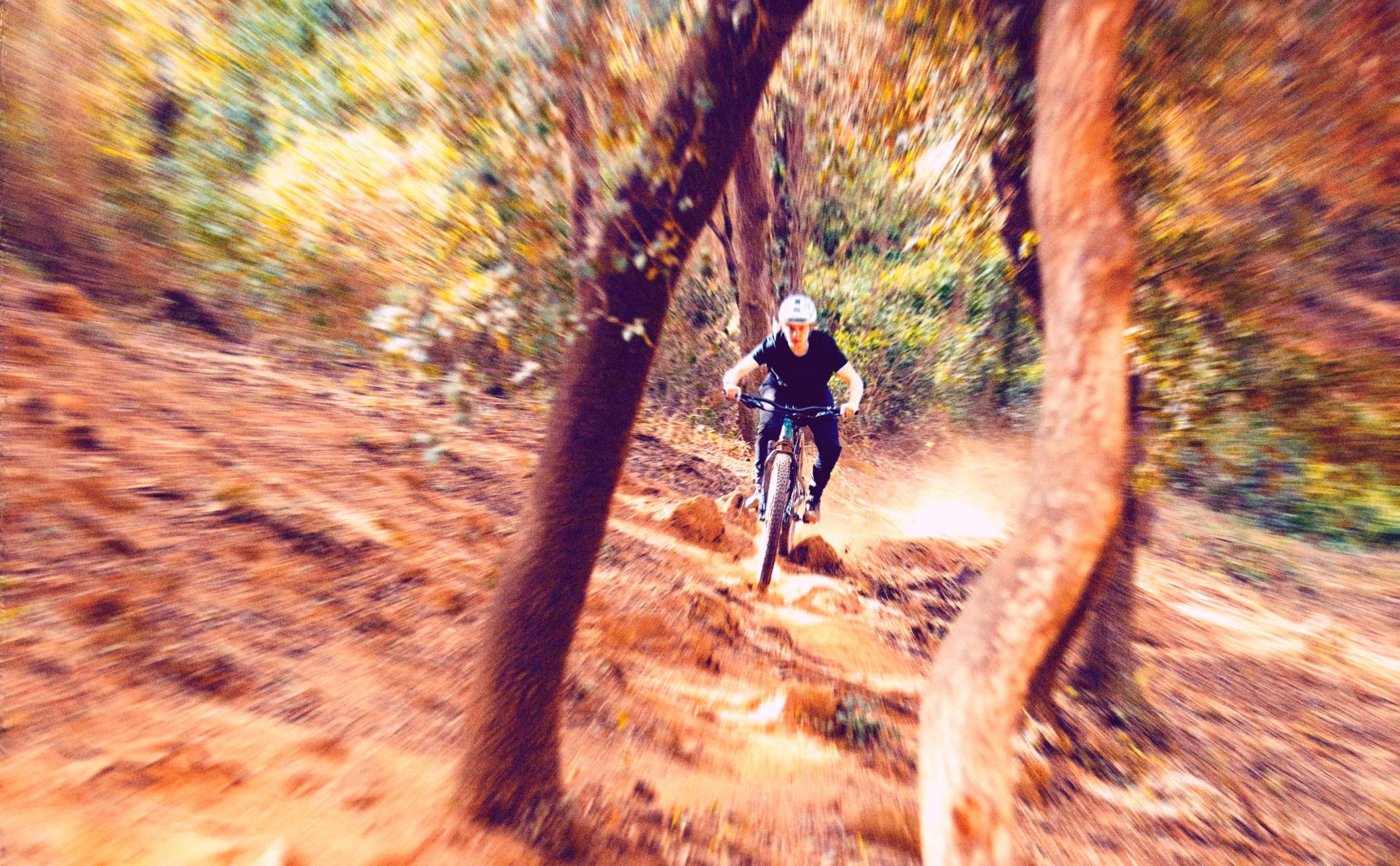
Wondering which Cannondale mountain bike is right for you? Read this buyer’s guide first.
For nearly 40 years, Cannondale has been at the forefront of mountain bike innovation. We’ve continually pushed the evolution of mountain bikes to meet the needs of today’s riders and the terrain they want to conquer. This buyer’s guide will help you take your goals and match them to the right bike for your mountain bike adventures, wherever the trail may lead.
What are the key considerations when shopping for a mountain bike?
What are the decisions to make when buying a mountain bike?
What are the different categories of mountain bikes?
Use Cases: Match your type of riding to find your ideal bike.
What is a mountain bike?
Despite the amazing evolution of the mountain bike over the past 40 years, there are several signature characteristics that you’ll see in nearly every mountain bike. Here are the distinguishing features that make a mountain bike a mountain bike:


Large knobby tires
Likely the most distinctive feature of a mountain bike are the large knobby tires. Designed to excel off road, mountain bikes have wide, 2.0- to 2.6-inch width tires with aggressive tread capable of providing consistent traction, even on loose trail surfaces. Because of their width, mountain bikes tires use dramatically lower tire pressure than road bikes, with their skinnier tires. By comparison, a typical rider will most often run 18-35 psi in a mountain bike tire, compared to 80-100 psi in a road bike tire.
Durable frame and fork
Designed to be safely ridden on rough, demanding trails, mountain bike frames and forks are engineered to be stronger than other types of bikes. You can typically see this added strength in the form of larger, stiffer frame tubing, and larger diameter legs on the suspension fork, if so equipped. Mountain bikes can have no suspension (rigid), front suspension only (hardtail), or front and rear suspension (full-suspension).
Wide flat handlebar
With very few exceptions, every mountain bike sold today is equipped with flat, or riser handlebars, which offer more control over rough terrain than drop bars. Mountain bike handlebars are much wider than their road counterparts as well, to give riders the leverage and confident control they need to tackle today’s technical trails. As a comparison, most road bike handlebars are between 40cm and 46cm wide, modern mountain bike handlebars are typically between 75 to 82cm wide (750mm and 820mm).
While this buyer’s guide will focus on traditional, non-electric bikes, much of the considerations and information are applicable to electric mountain bikes as well. Adding electric motors to mountain bikes has changed the game, making it just as fun to ride up hills as it is going down. If you’re in the market for an electric mountain bike, be sure to also check out our Electric Bicycle Buyer’s Guide.


What are the key considerations when shopping for a mountain bike?
Where will you ride most often?Your choice of mountain bike type should match the terrain you plan to ride most often. So, if you’re a mountain biker that’s primarily riding smooth, twisty trails with minimal to moderate inclines, a hardtail or full-suspension trail bike or cross country bike would be the best options for this type of riding.
On the other hand, if you live in a mountainous area where the trails are rough and rocky, you’ll likely want to look at longer travel full-suspension trail or enduro bikes. Later, we’ll talk about how much suspension travel is right for the type of riding you want to do.
How else will you be using the bike?
One of the coolest things about a mountain bike has always been its ability to conquer any conditions. So, if you want to ride across town to a friend’s house, you can do that. A quick trip to the store? No problem. While a mountain bike will never be as fast around town as road bike options, a mountain bike gives you true freedom to choose your own route.
If you’re trying to balance dirt trail, or “singletrack” prowess with around town rides, a hardtail trail bike is often a good choice, as it will perform well both on the trail and on the street.
If you find that the riding you want to do is skewing more toward urban adventure, bike paths, or commuting, check out our Hybrid line of flat-bar fitness, urban and electric bikes.
How much do you have to spend?
Retail prices for premium performance mountain bikes range from around $700 to more than $13,000, so setting a budget range is a helpful tool to start narrowing your search. As you move up in the price range, mountain bikes gain features such as additional suspension travel, with lighter weight carbon fiber frames, and higher-end drivetrain and brake components that shift faster and brake harder than lower priced models.
Regardless of the type of mountain biking you aspire to do, we recommend factoring $300-600 into your budget for a helmet, shoes, apparel, a pump, chain lube, and other maintenance/repair gear.
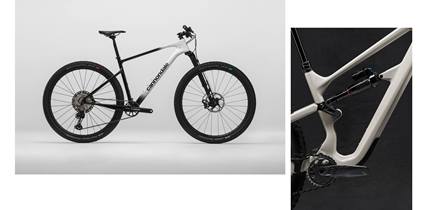

What are the decisions to make when buying a mountain bike?
Hardtail or Full-Suspension mountain bike?
One of the most distinctive features of modern mountain bikes is suspension. The decision of whether to go with a full-suspension bike or a hardtail (with just front suspension) is one that comes down to three primary factors: price, preference, and terrain. When comparing mountain bikes of a similar specification level, a full-suspension bike will usually be more expensive, typically to the tune of 10-20 percent.
From a performance standpoint, full-suspension mountain bikes are easier to ride, and ride fast, in most off road conditions. Riders in rough, mountainous terrain may find they need the added comfort and control full-suspension bikes provide. Whether you’re heading out into the backcountry or ripping it up at the bike park, full-suspension bikes tame the terrain, so you stay fresher, more in control and ultimately, have more fun. While there is often a small weight penalty for full-suspension, the benefits of a smoother ride and faster rolling over bumpy terrain outweigh the negatives for many riders.
That said, the simplicity of a hardtail is perfect for riders that want a bike that’s easy to maintain and is always ready to rip at a moment’s notice. And some racers just prefer hardtails. Simple as that.
Do I really need rear suspension?
As mentioned above, the choice of a hardtail or full-suspension mountain bike is one you’ll need to make, but the answer is one that’s based on your preference, your budget and the terrain you’ll be riding. If you’ve never ridden a full-suspension bike off-road, it’s worth seeking out an extended test ride or demo of a bike you’re interested in, or borrow a friend’s bike, so you can feel the difference rear suspension makes on familiar trails.
Suspension travel and features
Whether you choose a hardtail or a full-suspension mountain bike, you’ll have to decide how much suspension travel, which is the distance the suspension is able to compress to absorb bumps, is right for you. Front and rear suspension travel ranges from 100mm (4-inches) to 170mm (6.7-inches) or more, depending on the type of riding the mountain bike was designed for. Shorter travel bikes generally feel racier and more responsive in cross country type riding. However, for most riders, longer travel bikes retain their composure longer at high speed in rough terrain, or over jumps, drops and bike park type obstacles.




Cross Country / XC bikes
Cross Country riders typically gravitate toward bikes with 100-120mm of front, or front and rear suspension travel.
Trail bikes
Moving one step up, trail bikes most often fall into the 120-160mm travel range, while enduro bikes jump up to the 170mm plus travel range.
With each step up in travel, full-suspension bikes tend to get more capable on the downhills but are a bit less responsive on the climbs. Because longer travel bikes tend to be stronger and heavier, their climbing prowess suffers to a certain extent.
Regardless of the amount of travel you decide you need, as you move up in the price range, the suspension components offer more adjustments to enable you to customize the ride quality to your preferences. While basic suspension components allow for basic stiffness adjustments, more expensive/advanced suspension parts also enable the rider to adjust the amount of hydraulic compression and rebound damping the fork or shock provides.
The front suspension forks equipped on mountain bikes under $1,500 mostly use coil springs, which are very reliable, but are harder to adjust for riders of different weights and riding styles. As you get to the $1,500 price range, suspension forks start to use air springs, which are both lighter and easier to tune.
The increased adjustability makes it much easier to precisely tune the suspension for riders of varying sizes and weights. Cannondale makes setting up your suspension even easier with the Cannondale App, which includes a suspension setup guide customized to your bike and weight.
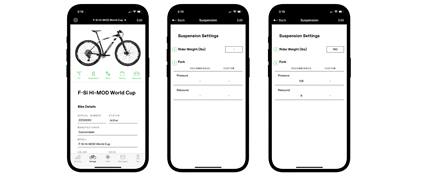

The advantage of larger wheels
In the early days of mountain biking, almost every bike was equipped with 26-inch wheels. Some early Cannondale models even came from the factory with a 26-inch front and 24-inch rear wheel, which today would be called a mullet mountain bike. And while those smaller wheels made for an incredibly responsive ride, we eventually learned that larger diameter 27.5-inch and 29-inch wheels roll faster with more control. This is particularly true in rough off-road terrain, where the larger wheels don’t drop as far into holes or ruts. Instead of dropping into holes and bouncing, larger diameter wheels roll smoother, with less disruption to forward momentum.
That said, dirt jump bikes still prefer 26-inch wheels because they’re easier to spin and trick with. Dirt jump courses are typically groomed and watered, more like a downhill BMX track than a backcountry singletrack, so the ability to smoothly roll over bumps is less important.
Tire size options
Regardless of wheel size, most modern mountain bike tires range from 2.0-2.6-inches in width. Racers, riders on smoother trails, or those who also use their mountain bikes for commuting, will tend to run 2.0-2.3-inch tires. Dedicated trail and enduro riders will most often run wider 2.4-2.6-inch tires for increased traction and control in demanding trail conditions.
In general, narrower tires will be lighter and will feel faster on smooth ground, while wider tires can be run at lower pressure to increase ride quality, traction, and confidence in rough terrain.
The tread pattern on mountain bike tires differs depending on the type of riding and riding conditions they are designed for. Tires with bigger knobs tend to roll slower on smooth ground but provide superior traction in loose conditions. On the other hand, tires with smaller knobs tend to be lighter and more responsive, and in some hardpack trail conditions can provide superior traction to more knobby tires.
Each Cannondale bicycle is equipped with tires that we believe offer the optimal balance between fast rolling and traction. However, if you find you want faster rolling, you can swap to lighter, narrower tires, or if you want more traction, most Cannondale bikes can fit slightly larger, more knobby tires.
One quick way to dial into the best tires for your local riding conditions is to check in with your local bike shop, or with local riders, and see what tires they’re running. Ask questions to learn more about the tire pressures they’re running and if they’re running their tires tubeless or not. This can be very helpful if you’re just getting into the sport or coming back to mountain biking after time away.
Tubeless compatibility
Regardless of the wheel size you choose, tubeless compatibility is something most riders want. Tubeless-compatible tires and rims ditch inner tubes, instead relying on a liquid sealant inside the tires to retain air. The sealant is also capable of sealing small to medium sized punctures, which dramatically reduces the occurrence of flat tires for most riders.
Most tubeless-compatible rims and tires will be labeled as such, either with the words “tubeless-compatible” or “TLR” –– a generally accepted acronym for tubeless-ready wheel components.
Frame material
Nearly four decades ago, Cannondale pioneered the aluminum mountain bike, in an era when most mountain bikes were built from chromoly steel. Their distinctive fat tubes and incredibly lightweight made them popular with mountain bikers around the world. And while aluminum mountain bikes still deliver unbeatable bang for the buck, our carbon fiber mountain bikes are state of the art in light weight and high performance.
Some Cannondale mountain bike models –– like the Habit full-suspension trail bike –– are available in both aluminum and carbon frame versions, giving you the freedom to decide which material is best balance of value and performance for your riding.
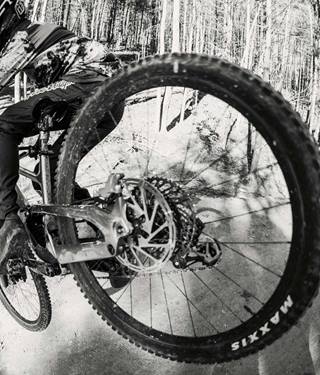


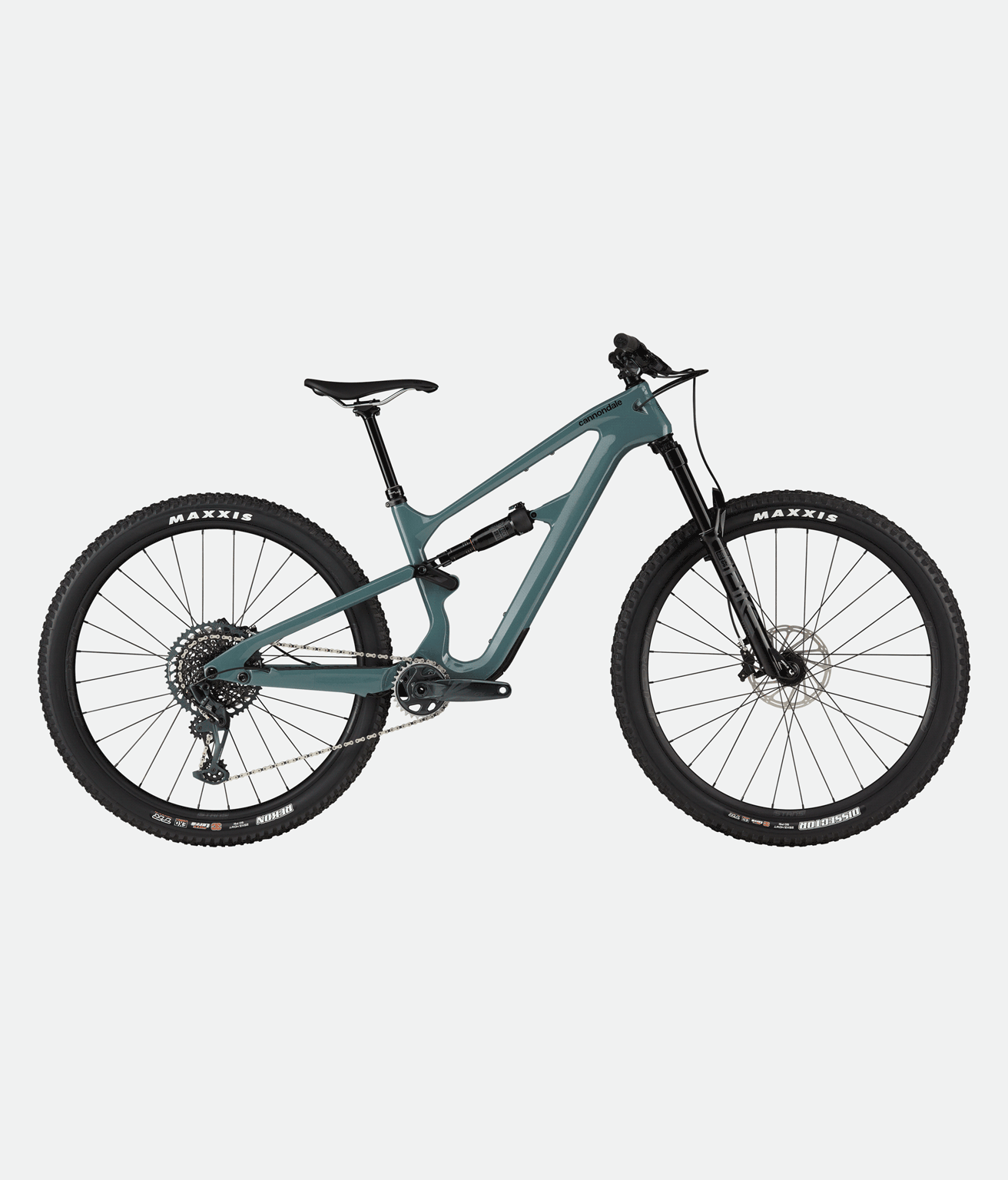
Dropper seatpost?
As their name suggests, dropper seatposts enable you to drop the saddle out of the way, or raise it again, at the press of a button. This makes it easier to move around on the bike, and especially get your weight back over the rear tire for technical trail riding or bike park riding, dropper posts are ideal. You can quickly drop the seatpost for technical sections or jumps, then raise it again for efficient pedaling on flats or climbs.
While many new mountain bikes come equipped with dropper posts, it’s possible to upgrade a bike with a rigid seatpost to a dropper post. So, if your initial budget doesn’t have room for the added cost of a dropper post, you can always add one later on.
Gearing
Early mountain bikes used drivetrains with three gears (called chainrings) in the front and 5-7 gears in the rear. This gave them the low-low gears to climb hills, and the high-high gear for top speed. As mountain bike drivetrains have evolved, they have reduced the number of chainrings in the front, while expanding the number of gears in the rear. Today, most mountain bikes retailing for more than $900 use what’s called a 1x (say “one-by”) drivetrain, with one chainring in the front and 10-12-speeds with a wide-range gear spread in the rear. Modern entry-level mountain bikes often use two chainrings in the front, with 7-8-speeds in the rear.
1x drivetrains have given frame designers the freedom to build full-suspension mountain bike frames that optimize rider fit and pedaling performance in ways that previously were impossible. They have also increased the reliability of mountain bike drivetrains, especially for less experienced riders. With just one shifter, there’s no confusion when it comes time to select a harder or easier gear.
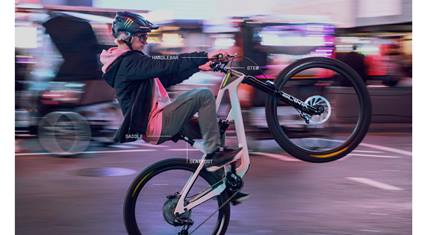

Components
Cannondale equips its mountain bikes with drivetrain components from industry leaders including Shimano, SRAM and MicroShift. In fact, several of our upper end bikes are available with a choice of SRAM or Shimano drivetrains. But regardless of drivetrain brand, as you move up in the price range, drivetrain components will get lighter and stronger, with more accurate shifting. As discussed earlier, brakes move from mechanical to hydraulic, and this typically happens around $750 MSRP.
Most mountain bike wheels are equipped with aluminum rims, which provide the best combination of strength, weight, and value. At the high end (>$6,000), you’ll find carbon wheels, with carbon fiber replacing alloy as the rim material of choice.
The cockpit components of a mountain bike –– the handlebar, stem, seatpost, and saddle –– are also upgraded as you move up the price scale. Most entry-level and mid-range mountain bikes are equipped with aluminum handlebars, stems and rigid seatposts. As you move up in price, you’ll see carbon fiber handlebars appear, as well as dropper seatposts or rigid carbon fiber seatposts. And saddles will shed weight as you move up in price, replacing their steel rails for lighter carbon fiber or titanium rails.
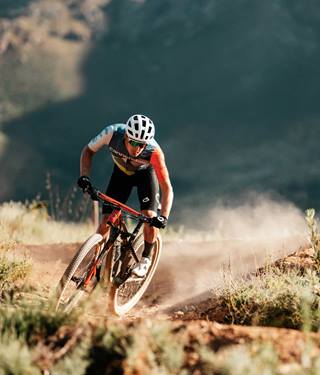


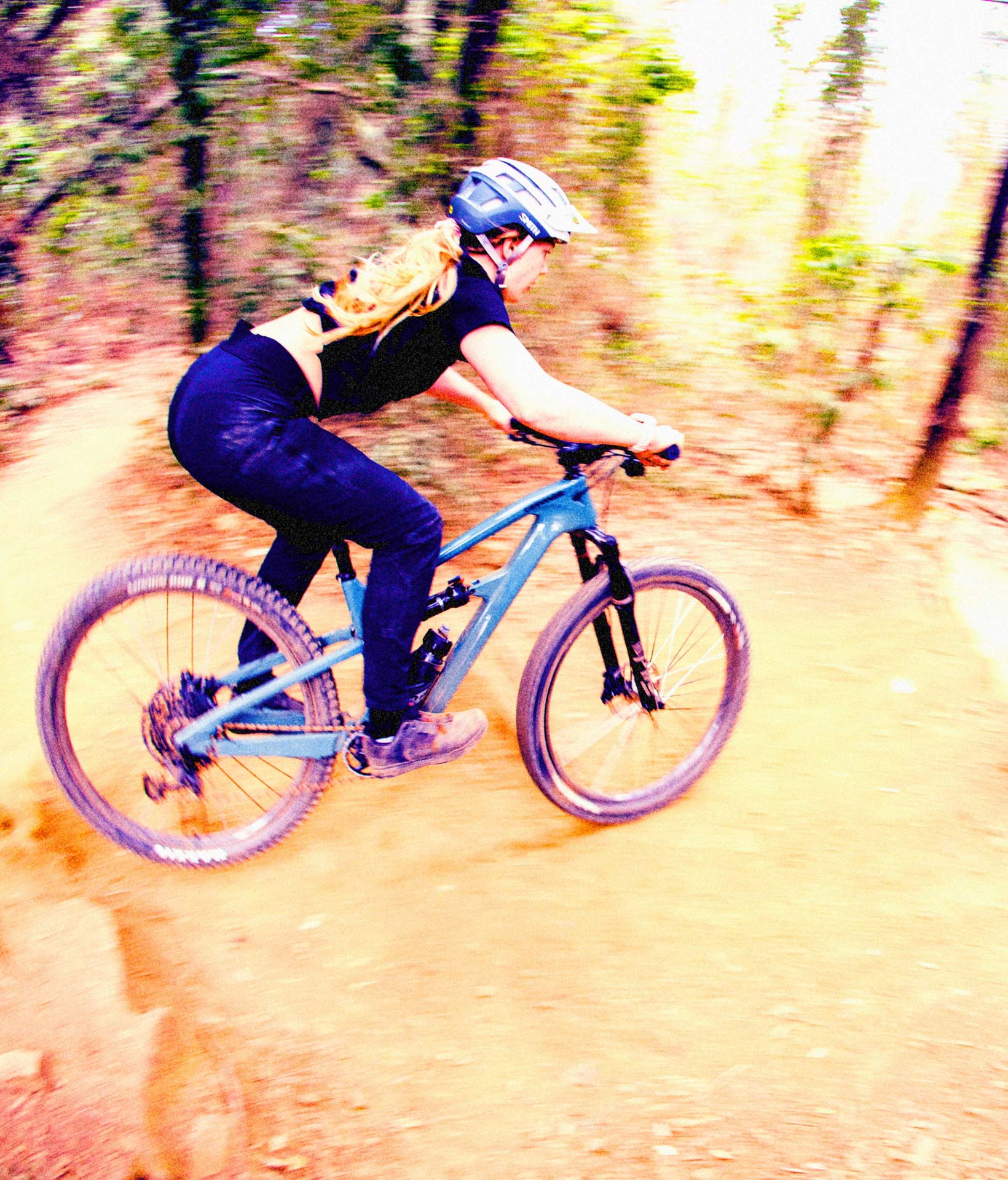
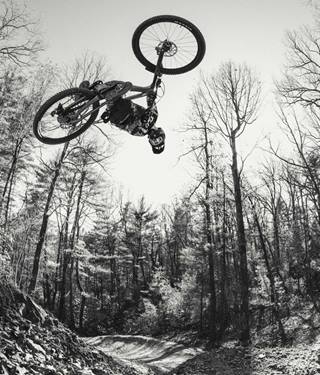

When it comes to getting down a hill, whether in the bike park or the backcountry, nothing beats an enduro bike. With seven inches of travel designed for sharp, hard hits, enduro bikes are capable of tackling the gnarliest trails at high speeds. The stiff, large diameter frame and fork tubes, and reinforced components are designed to not just survive but thrive in the roughest conditions.
As a result, enduro bikes are heavier than trail bikes, and they sacrifice a certain amount of climbing prowess to maximize descending acumen. But for those focused on getting downhill fast, there’s nothing better.


Use Cases: Match your riding to find your bike.
If you want one bike to ride singletrack and commute to work on, a hardtail like the Cannondale Trail would be most folks’ first choice. If you’re looking for full-suspension, check out an xc dually like the Cannondale Scalpel.
If you’re looking to try cross country mountain bike racing, take a look at our Scalpel HT hardtail, or our full-suspension xc bike, the Scalpel.
If you’re not so interested in racing, but want one bike to conquer any trail, check out our Scalpel SE and Habit full-suspension bikes, as well as our Habit HT (hardtail).
If you live for big mountain descending, the Cannondale Jekyll gives you the rock smashing confidence you need to raise your game.
If you want a mountain bike you can ride daily with a minimum of maintenance, check out one of our hardtail models: the Habit HT, Scalpel HT or the Trail.
If you’re looking for a bike to take to your local bike park, our Jekyll or Habit LT full-suspension mountain bikes give you the right stuff to have more fun on every run.
If you want to give dirt jumping a try, check out the Cannondale Dave dirt jump mountain bike.
What else do I need to get out and ride?
Whether you’re looking for the essentials to carry with you on a ride or want to customize your Cannondale to meet your precise needs, we offer a wide range of accessories to get you onto the trail. From helmets to water bottle cages and bottles, to pumps, multi-tools, and bags to carry your stuff, we have the gear and accessories you need to get out and have fun with confidence.


